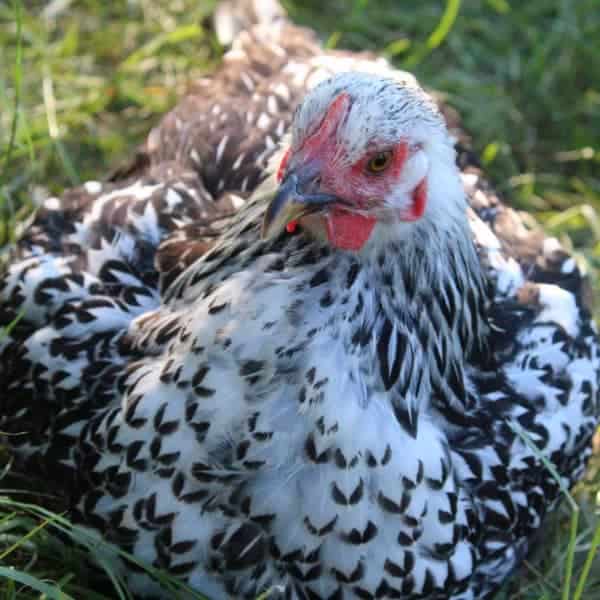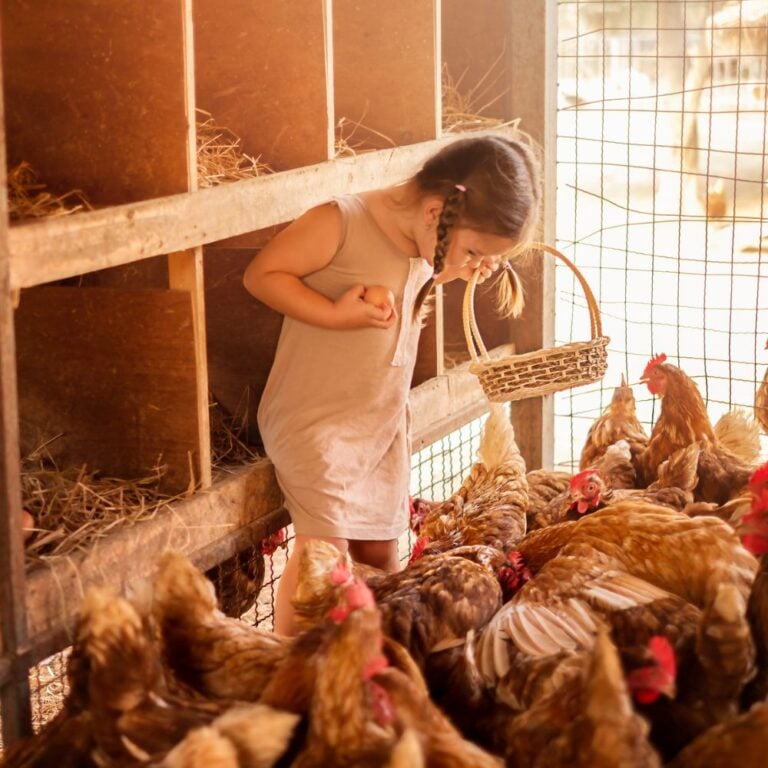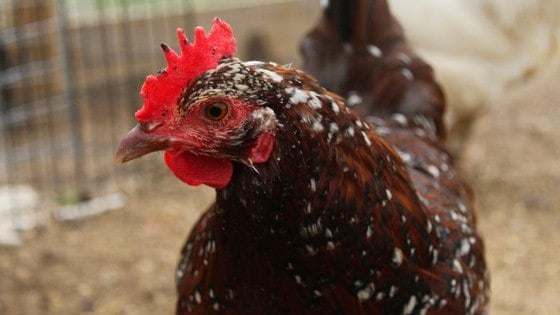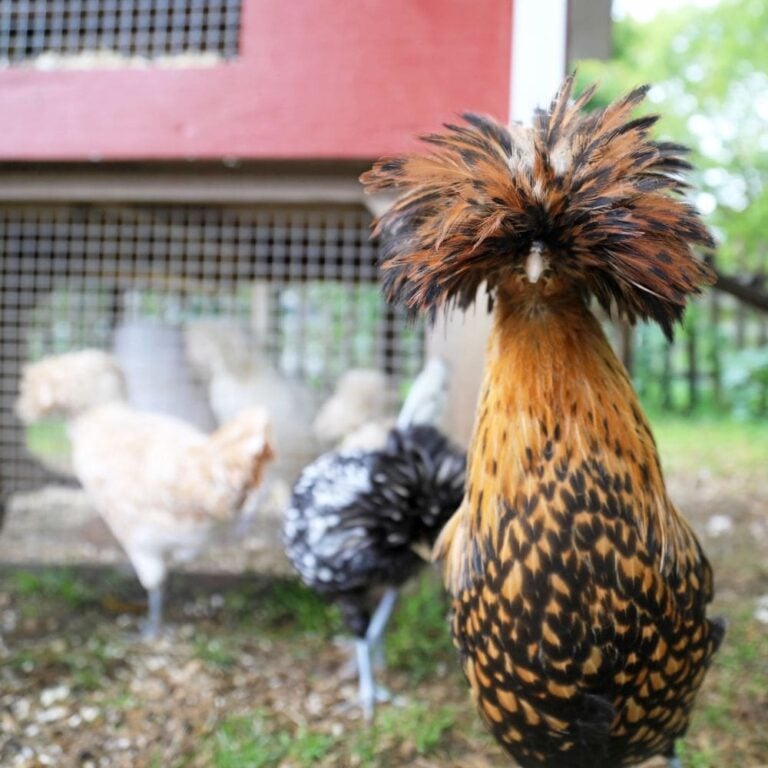Are your hen’s feathers looking a little sparse these days, you might not just be imagining it. Chicken feather loss can be caused by many things.
There are several culprits behind why your hen might be losing her feathers, but if you’re looking for more information on how to help your hen grow her feathers back fast, you’ve come to the right place.
Here are some tips to help your ladies return to their former luster – and in a hurry.
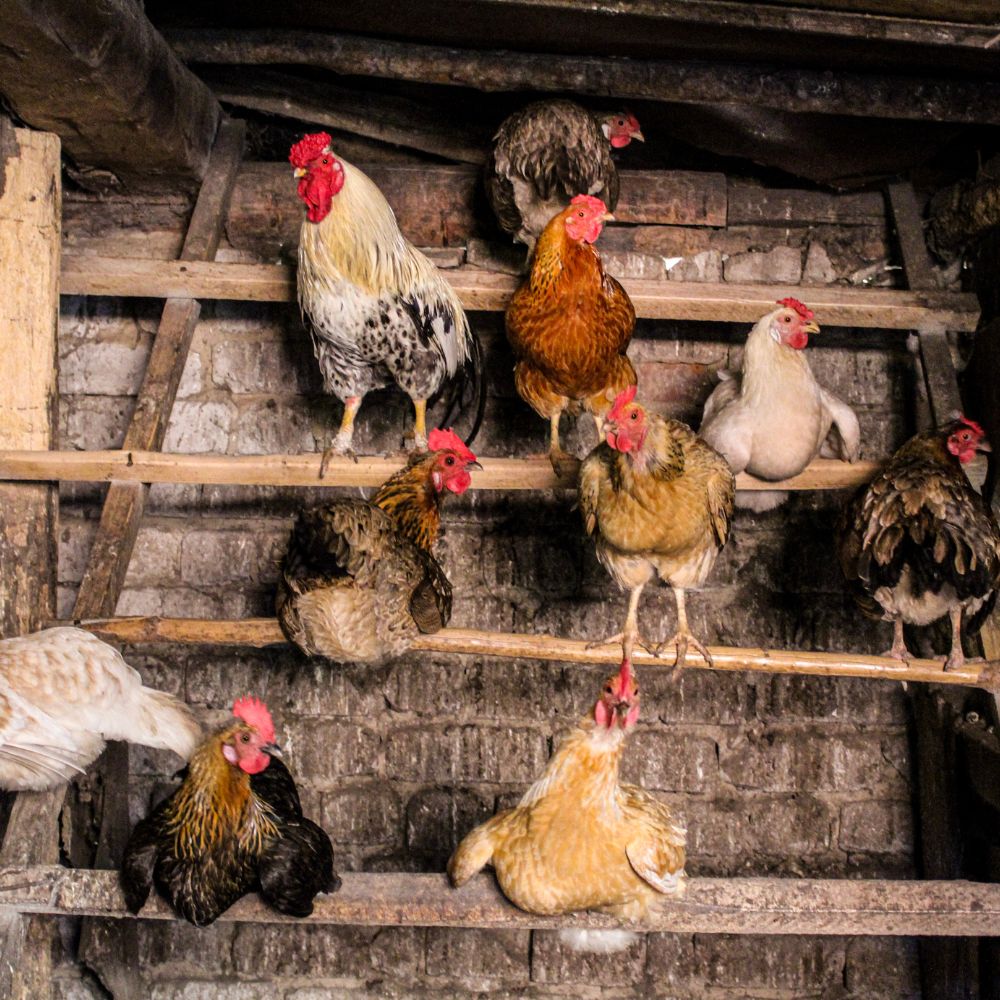
Table of Contents (Quickly Jump To Information)
What Causes Feather Loss?
Molting
Molting is one of the most common reasons why hens lose their feathers. It typically happens first when hens are around 18 months old – then, it occurs on an annual basis. For the most part, you can expect about two months of feather loss and regrowth but this can vary depending on the age, weather, breed, and individual disposition of your chickens.
In fact, for some hens, it can take up to four months for them to finish molting.
How do you know if it’s the molt?
Molting looks different for each and every chicken. A hen’s molt will vary depending on her diet, environment, and age. It can start slowly, with you noticing that the feathers of your bird are simply starting to lose their shine. Alternatively, you might notice that your hen has lost a large cluster of feathers overnight.
Generally, molting lasts 8-12 weeks and is triggered by shorter days (so in most cases, you’ll notice the molt begins at the end of summer or the beginning of fall).
Whatever the case may be, in general, productive egg-laying birds and younger hens will recover from the molt more quickly than older hens.
Broodiness
If you discover that only one hen has lost feathers and that she is acting in a peculiar manner, there’s a good chance that she isn’t molting – she’s just gone broody. Broody hens are those that have decided they want to hatch their own chicks. They will lay on top of their eggs all day long, moving only to eat and drink occasionally.
Broody hens lose their feathers because they will pull them out of their breast. This is done so their skin can make direct contact with the eggs. If broodiness is to blame for the feather loss, you likely won’t notice largescale, widespread feather loss but only in this specific area.
Bullying
Some chickens will lose their feathers when other members of the flock are picking on them. Raise chickens long enough, and you’ll quickly discover that hens will constantly compete to move to the top of the pecking order (or chicken hierarchy, so to speak).
This is normally harmless behavior, but sometimes, it can get more aggressive, with dominant chickens pecking and pulling the feathers from less dominant chickens.
Again, if your chicken is losing feathers and you see bald spots…and is the only one in the flock that seems to be suffering, bullying and pecking order issues could be to blame.
This can be quite dangerous, as it can lead to raw spots on your chicken’s skin that can entice more bullying – and even lead to death. Some over-bullied hens even become victims of cannibalism in the flock.
Disease and Parasites
Another issue that can cause widespread feather loss in your flock is disease or parasites (external and internal parasites). Both can cause feather loss – and can also cause your birds to quit laying eggs.
Lice and mites are the most common, causing widespread feather loss all over your hens’ bodies or just in isolated areas (such as around the vent).
Ensuring that your flock has the proper vitamins and minerals will help them fight off parasites and disease as well.
Roosters
Even roosters can be to blame if your hens are losing their feathers!
When a rooster mates with a hen, he will hold onto her back with his beak. Mating can cause the rooster to pull the heathers out of her back and neck, so if you notice that this is where your hens are losing their feathers and you have a rooster in your flock, he could be to blame.
If this is the problem, you might consider a chicken saddle, check out this cute chicken helper here.
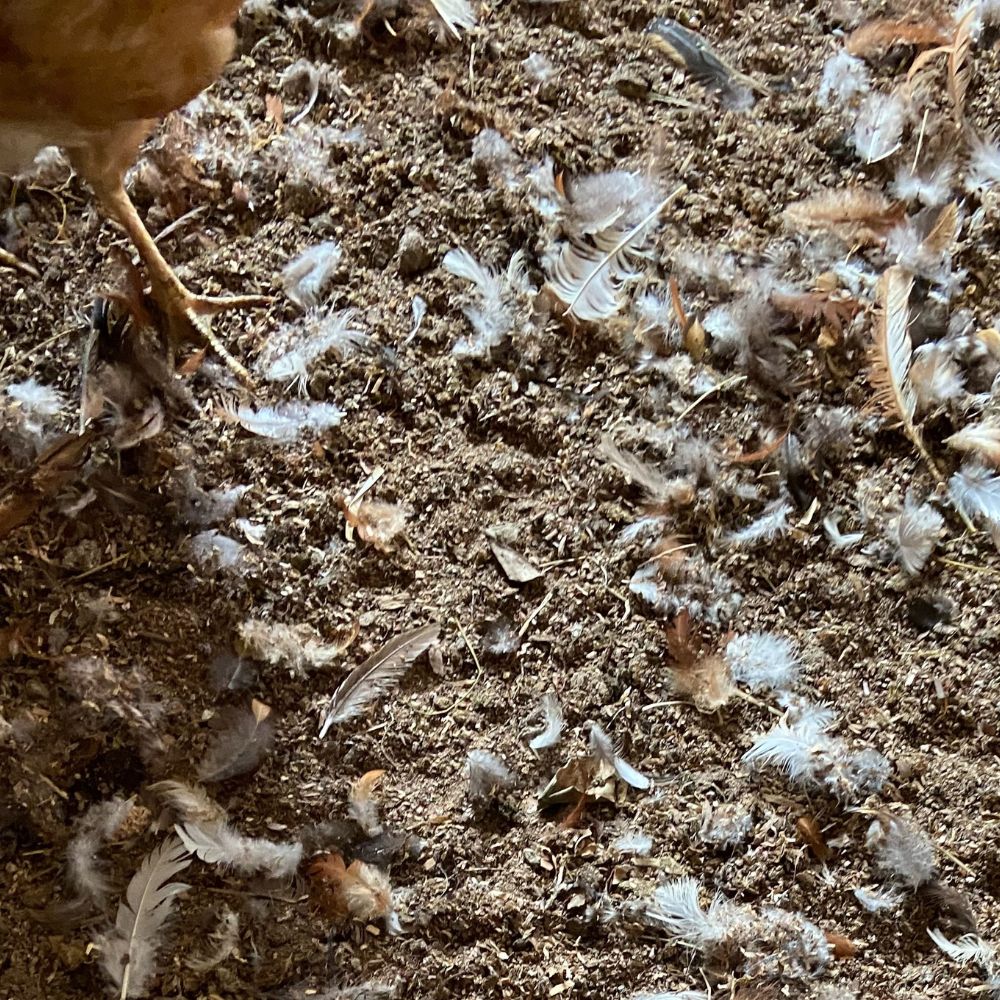
How to Help Your Hen Grow Her Feathers Back Fast
Supply Additional Protein
Believe it or not, the slightest change in your hen’s diet can trigger a molt. Therefore, you’ll want to pay close attention to what you are feeding your hens to make sure they are growing feathers properly.
Not sure what to feed your chickens when they are molting? IF you’re looking for tips to help molting chickens, be sure to check out this article!
In particular, monitor their protein intake. Feathers are almost entirely protein, containing about 85% beta-keratin. Therefore, a protein deficiency could be a reason for feather loss. Lots of protein will go toward replacing feathers during the molt, which is why egg production drops when your chicken is trying to replace lost features (for any reason).
The best possible thing you can do for your hen when she is trying to regrow her feathers, due to molting or any other reason, is to up the protein content of her food. Switch to a game bird feed or another option with added protein – you should look for 22 percent protein in the feed. If you don’t want to change to a new type of food, you can also add high-protein treats like these.
Here are some delicious mealworms your chickens are sure to enjoy. If you’re looking for a way to improve feather quality in chickens or to promote new feather growth in chickens after they’ve suffered some feather loss, adding high-protein treats like mealworms is the way to go.
Minimize Stress and Discomfort
A comfortable hen is a productive hen – and she is also a fluffy, well-feathered hen! Make sure your hens are exposed to as little stress and discomfort as possible. Maintain proper spacing in your chickens’ living quarters and keep the coop clean and tidy.
Provide your hens with ample access to feed and water, and make sure no one hen is being isolated from the feeding troughs or waterers by more dominant hens.
You should also take some time to shore up the coop against predators and other threats. Often, hens will lose their feathers due to stress alone. If you have a predator that continues to return and harass the birds in the chicken coop, this can lead to serious issues with feather loss and regrowing feathers.
Check that the coop has good air ventilation, too. This will help provide your hens with the environment they need for ample feather regrowth.
When and How to Switch Back to a Layer Feed
After your hens are done molting or have made it through whatever stressful circumstance (lice, mites, aggressive rooster, or whatever the case may be) is causing them to lose feathers, it’s time to focus your energies on going back to normal.
Once the feathers have been regrown, you can adjust the nutrient profile of your birds and transition back to a layer feed. This layer feed is a great option if you’re in the market!
Don’t do this all of a sudden, though – slowly wean your birds off the high-protein feed over the course of seven to ten days. That way, you won’t have to worry about any digestive upsets in your flock.
Keep a Good Ratio of Roosters to Hens
If you have both roosters and hens in your flock, you will need to do some extra work to make sure that proper breeding ratios are maintained. This article has some helpful tips on that subject!
Never keep a 1:1 rooster-to-hen ratio. That’s too many roosters! Instead, keep a rooster with five or more hens so that he doesn’t put too much pressure on one individual hen.
Help Bullied Hens
If your hen is being bullied and this is causing her to lose feathers, you are going to want to take action immediately. Usually, your best bet will be to isolate the bully.
Put the bully in a separate pen for a few days. When she returns to the coop, she’ll likely be more docile as the other girls will have worked out a new pecking order – and she’ll be the low hen in the pecking order!
Exercise caution when introducing new hens to the flock, too. There will always be a bit of jostling when you introduce new birds, but you can minimize this by introducing new birds slowly.
Make sure you have plenty of room in the chicken coop – at least three square feet in the coop along with 15 square feet apiece in the run. Any less than this, and you may find that bullying incidents are more common.
Will chicken feathers grow back after an attack? Yes – but you need to give your beleaguered hen some space while she recovers.
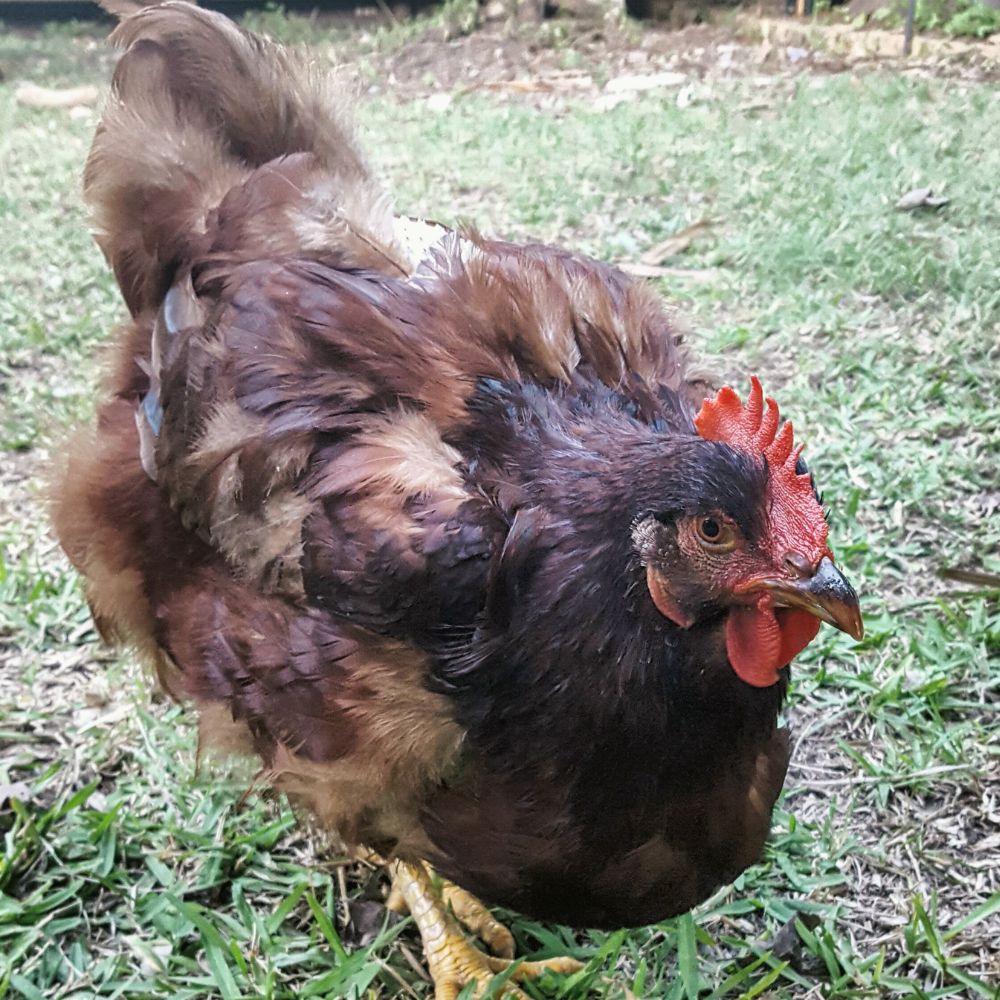
Treat Mites and Lice
The best way to help your hen grow her feathers back if she is suffering from parasites (internal or external parasites) is to get rid of them. After all, you aren’t going to be making much of a difference if the feathers grow back only to be damaged by infection or parasites again.
Treat mites by spreading poultry dust in your chicken coop (you can treat lice by applying the dust directly to your chickens). Chickens naturally enjoy dust bathing. You can also use natural treatments like diatomaceous earth. Of course, the first step in getting rid of mites and lice should be to regularly wash and clean your chicken coop.
While you’re treating for mites and lice, consider adding some of these nesting herbs to their nesting box- it will help your hen bounce back in a jiffy!
How Long Does it Take For Chicken Feathers to Grow Back?
Ultimately, there is no single “miracle cure” that will help your hen magically regrow her feathers overnight. However, you can incorporate plenty of tips and tricks to minimize stress on your hens. These techniques will help them regrow feathers that they may have lost due to bullying, molting, lice, or other common issues.
In most cases, chickens can regrow their feathers in a matter of a few short weeks or months.
With a bit of patience and attention to the individual health of each and every one of your hens, you’ll have a beautiful flock of hens that continue to lay plenty of delicious, nutritious eggs for you every day.
Summary
Backyard chickens make many folks very happy. But they come with their own list of things to watch out for. Feather loss is one of those. Now you have a good bit of information to help you figure it out and grow those feathers back!
Related Articles
- What is the Difference Between Chicken Mites & Lice?
- How to Fix a Broken Beak
- Homemade Suet Cakes For Chickens: Great Boredom Busters!
- Coccidiosis in Chickens
Maat van Uitert is a backyard chicken and sustainable living expert. She is also the author of Chickens: Naturally Raising A Sustainable Flock, which was a best seller in it’s Amazon category. Maat has been featured on NBC, CBS, AOL Finance, Community Chickens, the Huffington Post, Chickens magazine, Backyard Poultry, and Countryside Magazine. She lives on her farm in Southeast Missouri with her husband, two children, and about a million chickens and ducks. You can follow Maat on Facebook here and Instagram here.


